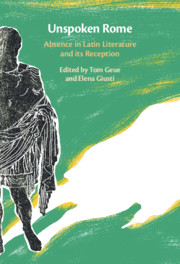Bibliography
Published online by Cambridge University Press: 03 September 2021
Summary

- Type
- Chapter
- Information
- Unspoken RomeAbsence in Latin Literature and its Reception, pp. 334 - 363Publisher: Cambridge University PressPrint publication year: 2021



